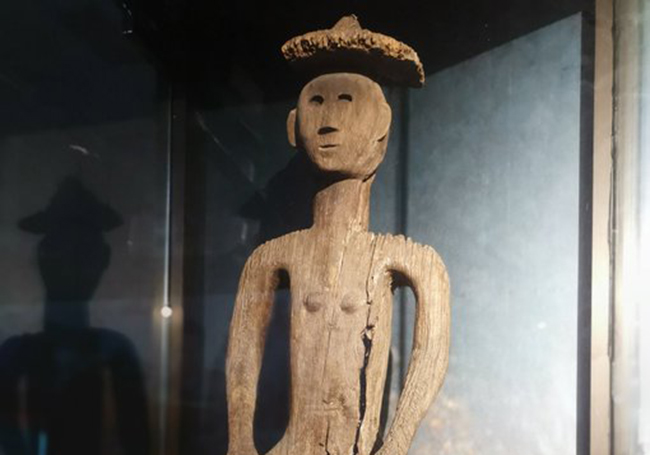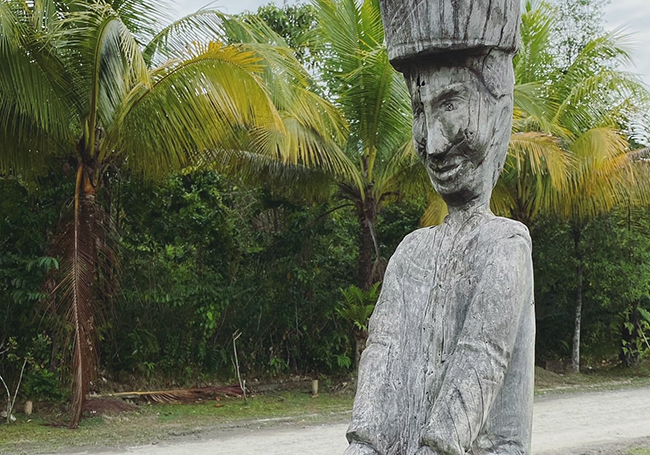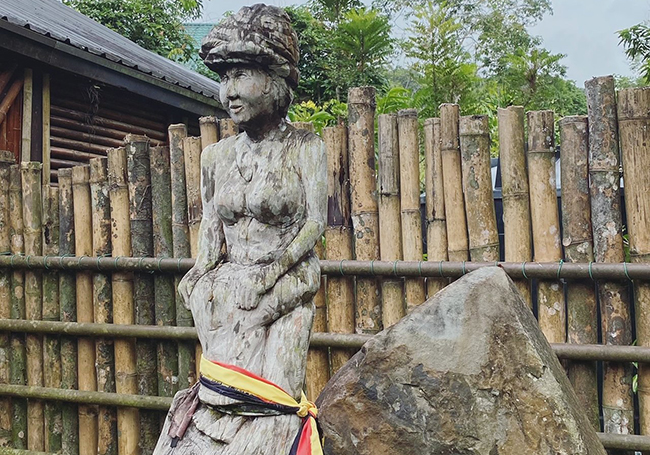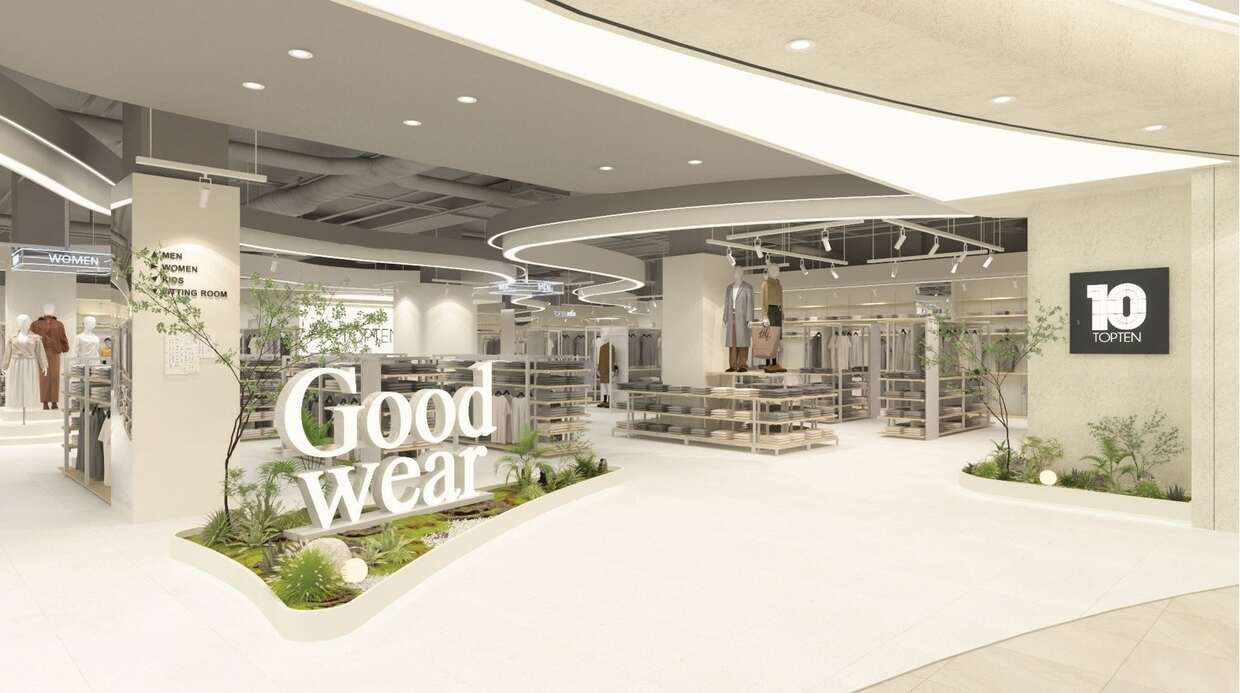
Totem poles of various indigenous tribes worldwide usually have exciting stories to tell, and so does the Borneo totem poles.
Generally, the totem pole features symbolic and stylized human, animal, and supernatural forms. It is primarily a visual representation of kinship, depicting family crests and clan membership.
The old Kadazan Dusun practice of erecting Sininggazanak in the padi fields in Sabah is no exception.
The Sininggazanak, which is also known as Tinomboizu is usually carved from hardwood and erected to commemorate a childless person. In the Kadazan Dusun dialect it is called Teningkianak.
The Kadazans of the Penampang-Kinarut-Papar localities usually practised this custom. However, it isn’t easy to find these days.
The most famous one was at Kampung Tampasak in Kinarut, which is open for the public to view at the Sabah Museum.

There is another one at a Borneo Native Village in Lok Kawi where one can see them.
The monument was erected on the deceased person’s paddy field by a relative with the most substantial claim to inherit the property.
The property must return to a blood relative if no direct heir exists. Relatives by marriage do not qualify.
The carved wooden object usually takes the figure of a woman or a man or a decorated pole, and there is no hard or fast rule.
What comes into play is the availability of skilled woodcarvers and what he is comfortable with in carving.

A certain amount of ritual usually accompanied the ceremony of erecting the Sininggazanak.
The Bobohizan (native medicine woman) would usually lead the chanting of prayers calling upon spirits to enter the monument. By doing so, the good spirits will be the guardians of the property.
As a result, a lot of respect will be accorded to the monument, failing which the disrespectful will either fall sick or even die if a thoughtless act showed towards it.
As the Kadazans in these districts are now mainly Roman Catholics, this old cultural practice has slowly died out.
According to Peter Phelan in his book Traditional Stone and Wood Monuments of Sabah, Kadazans are not the only people practised this in the Malay world.
He quoted Joan Ogden, who wrote the article, “A cannibal past and Christian Present” that the Bataks in Sumatra also practised the same.
A life-size image of the dead called Si Galegale in the Batak language will be made to ensure the spirit of a person who had died heirless rests in peace,











